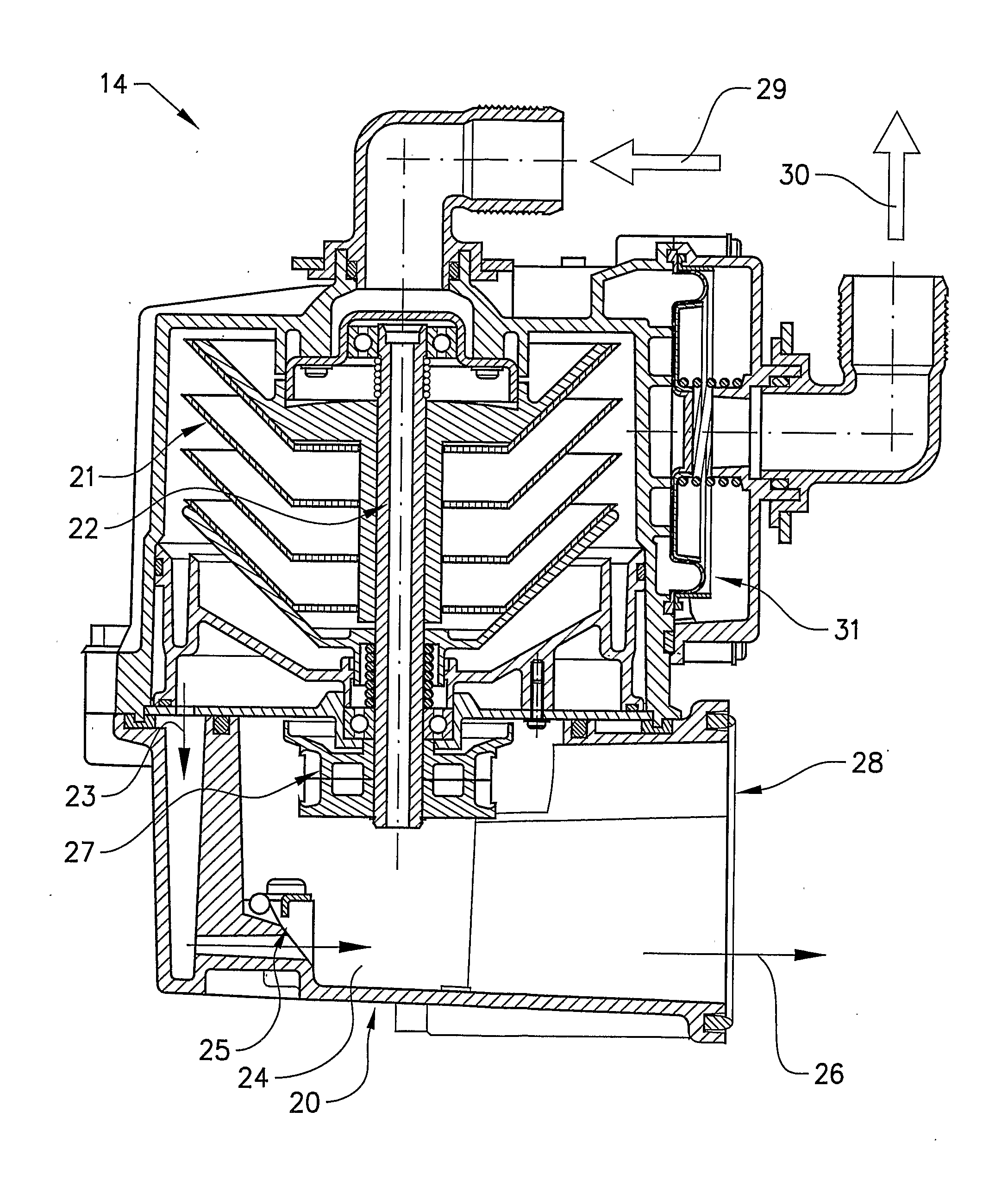Method for functional diagnosis of a separator
a functional diagnosis and separator technology, applied in the direction of machines/engines, separation processes, instruments, etc., can solve the problems of increasing the number of sensors, complex analysis methods, and increasing processing power, so as to achieve the effect of further improving the functional diagnosis of the separator
- Summary
- Abstract
- Description
- Claims
- Application Information
AI Technical Summary
Benefits of technology
Problems solved by technology
Method used
Image
Examples
example 1
[0035]While the engine runs at idle, i.e. with a low rpm and substantially no torque, the signal from the crankcase pressure sensor is registered at a first point or interval. In FIG. 3b, this registration would correspond to the time interval between 190-228 seconds or any point therein. The signal is thereafter compared to a reference signal, value or interval. From FIG. 3, this reference value is collected from region indicated Cf and Df for respective third graph C and fourth graph D. Note that the sections Cf and Df are very similar in terms of appearance, hence, the reference interval in this case is clearly independent of the functioning of the separator. The reference value from regions Cf and Df are substantially the maximum delta pressure, and is, in this shown example, continued for a period of time of about 10-20 seconds for the graph C and D. The difference between the registered signal and the reference signal is indicative of the status of the separator. For the third...
example 2
[0036]The same as in example 1 but with the difference that the reference is not dynamically provided for a stored reference on i.e. a storage unit connected to a control unit is used instead. The registered signal from the crankcase pressure sensor is then compared to the stored reference.
example 3
[0037]The same as in example 1, in combination with a stored reference as in example 2.
PUM
| Property | Measurement | Unit |
|---|---|---|
| time | aaaaa | aaaaa |
| time | aaaaa | aaaaa |
| time | aaaaa | aaaaa |
Abstract
Description
Claims
Application Information
 Login to View More
Login to View More - R&D
- Intellectual Property
- Life Sciences
- Materials
- Tech Scout
- Unparalleled Data Quality
- Higher Quality Content
- 60% Fewer Hallucinations
Browse by: Latest US Patents, China's latest patents, Technical Efficacy Thesaurus, Application Domain, Technology Topic, Popular Technical Reports.
© 2025 PatSnap. All rights reserved.Legal|Privacy policy|Modern Slavery Act Transparency Statement|Sitemap|About US| Contact US: help@patsnap.com



